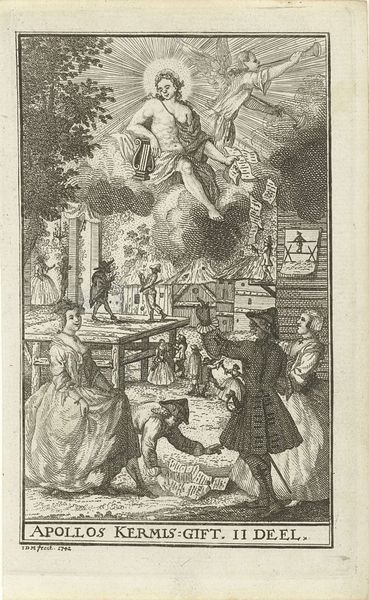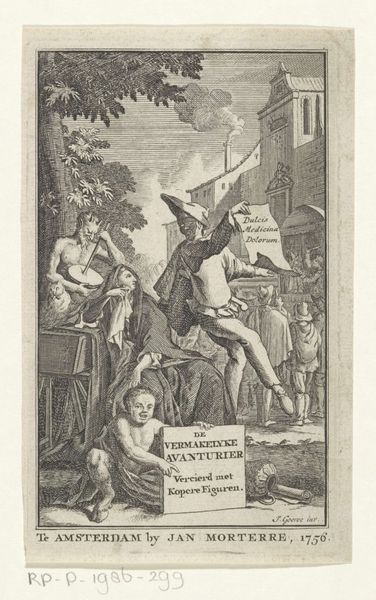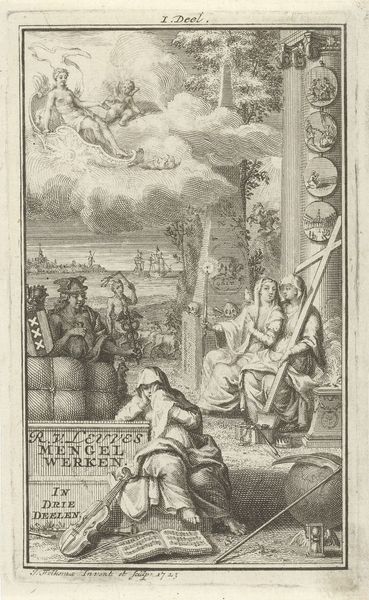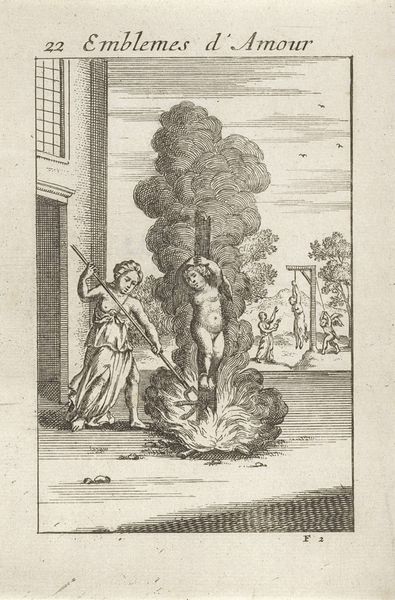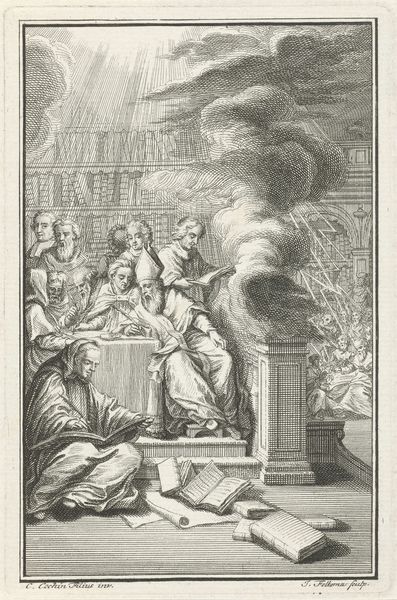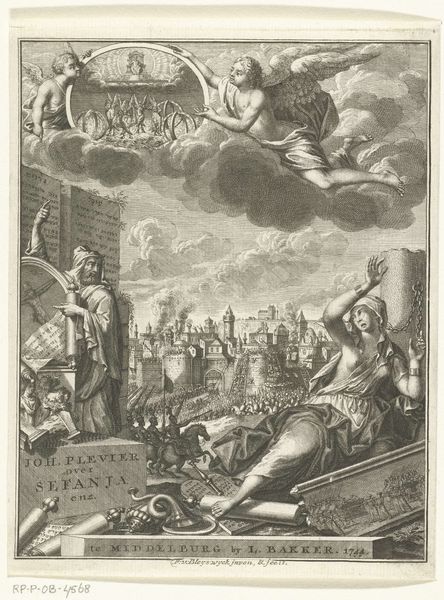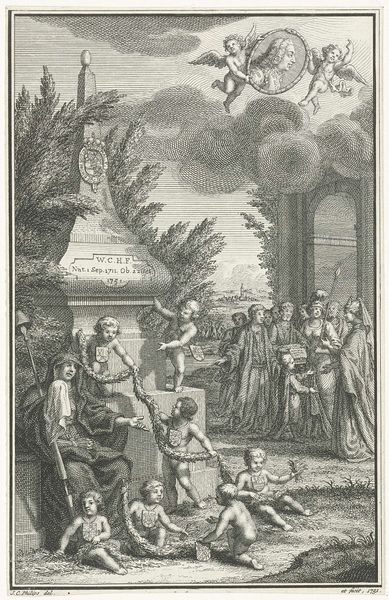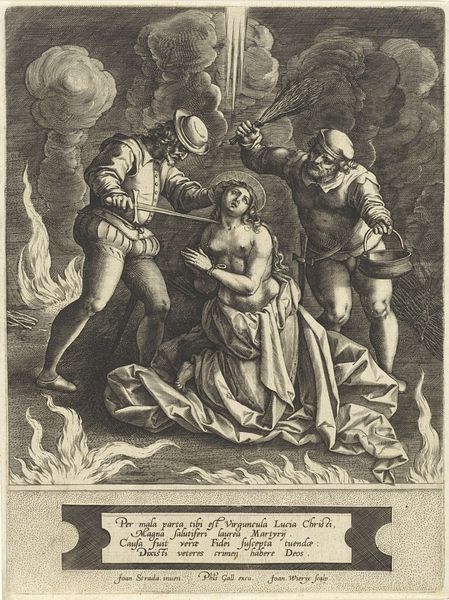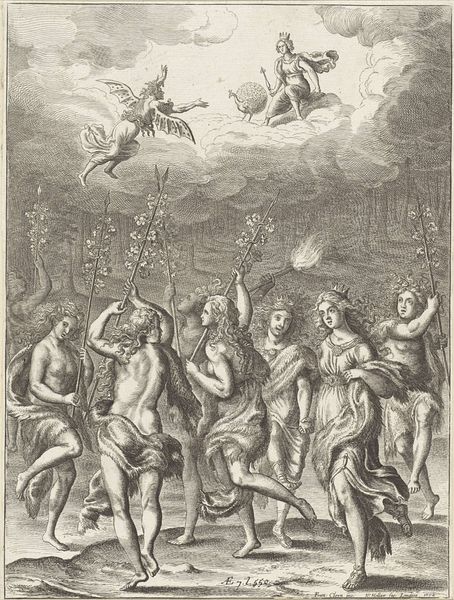
print, engraving
#
allegory
#
baroque
# print
#
old engraving style
#
landscape
#
figuration
#
genre-painting
#
history-painting
#
engraving
Dimensions: height 153 mm, width 95 mm
Copyright: Rijks Museum: Open Domain
Curator: Looking at this 1742 engraving, "Apollo in de wolken boven jeugdige figuren" by David Johannes Martini, I am immediately struck by its dense, dreamlike quality. The figures, caught in mid-gesture, seem to occupy both an earthly and ethereal plane. Editor: My first impression is how this print combines seemingly disparate scenes – the earthly frolic of well-dressed youths and the heavenly realm of Apollo in such close proximity. There's a sense of imbalance that creates an interesting tension. What can you tell us about the symbolism and how the social context of this piece enriches it? Curator: Given the title and era, the allegory at work is palpable: the god of music and arts, Apollo, oversees a lively, most likely commercial, gathering. The cascading scrolls are reminiscent of currency. So what are the complex intersections between power, youth, art, and commerce? I feel drawn to deconstructing this power structure. The artist attempts to show the interaction between elite social status and youth that are touched by the beauty of art. How is value measured in the material realm here? Editor: Well, if we center our analysis on production and reception, engraving was a method of democratizing images through replicability, serving perhaps as a gift, as implied by the caption “Apollos Kermes Gift." We can see how labor intersects high and low art through the tools employed in its creation. It also underscores the artist's material means and their availability. Looking at these youthful figures, one striking thing to notice is their elaborate textile production as clothing items, like the waistcoats. Curator: The print seems to operate on these complex layers – how art production mirrors larger social narratives of class, access, and symbolic representation. But I'm also intrigued by how this specific composition choices speaks to broader political undercurrents of Martini’s period – maybe even his own attempts to navigate power through artistic production. How much could you read class critiques into the production or subject of the artwork here? Editor: Maybe some, but I am drawn towards the social connections through commerce, labor, and the sheer volume of prints produced. If you really consider print as labor that then affects and involves a large population… Curator: These perspectives – of artistic materiality and social forces—create such productive dialogue. I find this print to be quite powerful, actually. Editor: Absolutely; thank you, as always, for illuminating the work's socio-political dimensions while the materiality informs its meaning.
Comments
No comments
Be the first to comment and join the conversation on the ultimate creative platform.
